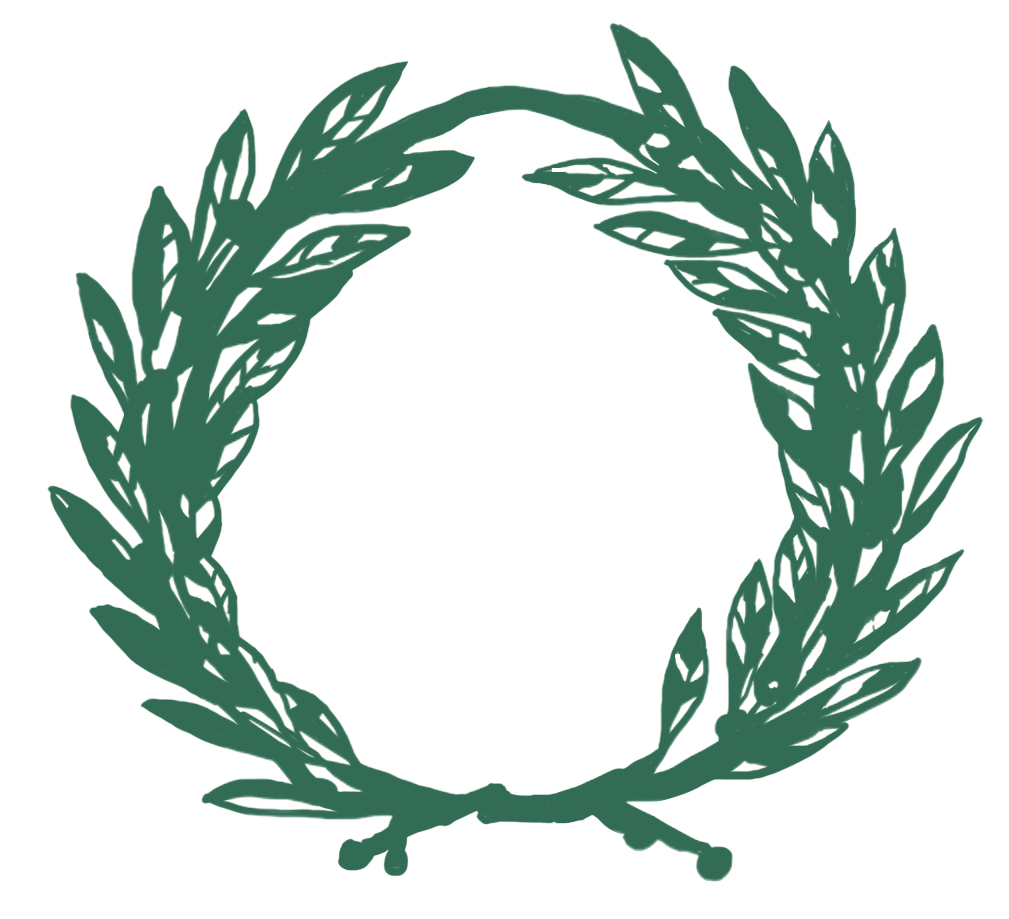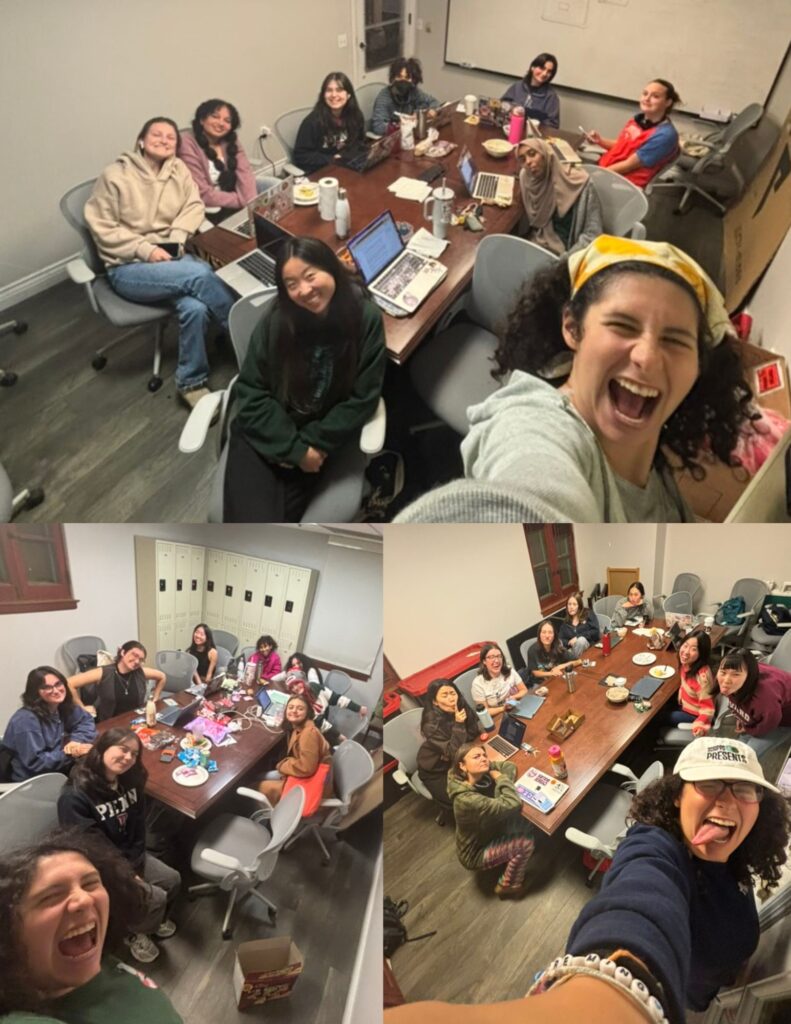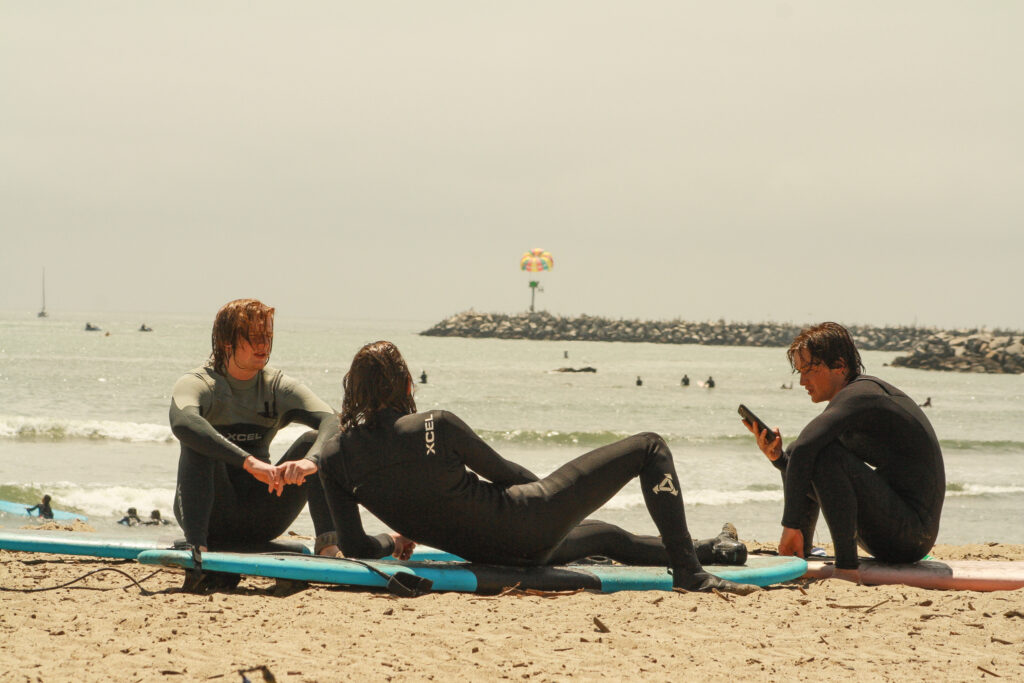Belén Yudess ’25
Copy Editor
On Sep. 5, Mikayla Stout ’25 opened her first solo gallery entitled “Body Mapping.” This exhibit features a variety of Stout’s multimedia projects that highlight the innovative ways she conceptualizes how people learn to exist within their bodies. The show consists of fiber art, sculptures, prints, and drawings that each play with different elements of color, texture, and structure. “Body Mapping” is a testament to Stout’s limitless creativity framed by her passion for the process of imagining and creating her art.
Stout originated this exhibit as she reflected on her artistic portfolio and her experiences visiting galleries while abroad in Scotland this past spring.
“I make a lot of different kinds of art, but for [this] exhibit, I tried to have things that were thematically or visually connected,” Stout said. “[I make a lot of] references to the body and identity, especially [through] faces, but all in an abstract way. I just wanted to do [this exhibit] for fun because while I was abroad, I got to go to a lot of exhibitions and learned that they’re not that hard and it’s nice to have people see your art and give you feedback.”
Stout was additionally inspired by the recurring theme of the relationship one creates with their body as an avenue of creating emotional and physical connections.
“I think I’m really drawn to portraitures,” she said. “A lot of my art tends to incorporate emotion and relationships, whether that’s between you and yourself, another person, different communities, [or other] sources of identity. I think being able to connect that back to a physical portrayal of the self is interesting.”
Stout’s exploration of the aforementioned relationships grounded Lila Gamble ’25 as she collaborated with Stout in masterfully curating the exhibit and deciding on its name.
“I decided to call it ‘Body Mapping’ because it’s a tactic that’s used in art therapy and when Mikayla was first telling me about constructing herself through these abstract portraits and etchings, I was really drawn in as to how she constructs these different versions of not just herself, but all these different selves in general,” Gamble said. “I thought a lot about body mapping, which is something that people do to conceptualize different parts of their body through art. I thought that that was really relevant to the way that she approaches art as something that’s therapeutic.”
Although each of her pieces seamlessly capture complicated dynamics through engaging models, Stout’s sculpture, “flesh,” stands out. “flesh” is a hanging sculpture constructed entirely from fabric garments and other synthetic fibers. In her statement, Gamble describes how “flesh” “interrogates corporeal violence on a symbolic and tangible level, using textiles such as pantyhose and yarn to illustrate a grotesque reality, one where womanhood becomes a commodity, where violence is inflicted upon the body and the mind.”
The message of “flesh” is one of immense thoughtfulness; a result of Stout’s methodical and deeply personal artistic process. “I’ve been thinking about the performance of making a piece,” Stout said. “The materials I’m using, where they’re from or if they’re secondhand, what history do they already have? If they’re firsthand, how are they produced? And then how does my interaction with it change that or add on to its history.”
Stout further explained how her recent dive into textiles has allowed her to engage critically with different historical and material experiences associated with sewing. “I think there are so many different kinds of expansive materials that can go into a sculpture with connections to sustainability or gender,” she said. “I’ve been really getting into sewing and its history as a feminine kind of labor. I also love being able to have something that feels so flexible; you can rip out seams, tear stuff apart, cut it, layer it, and it can be 2D, 3D, stuffed, dyed, burned. I just really love being able to hold it and feel it in my hands.”
Aside from “flesh,” Stout also drew attention to the other hanging piece in the gallery, “Claustrophobic.” “I think it’s the most technically successful piece,” she said. “I always struggle with having too many ideas and too many concepts floating around, and I think “Claustrophobic” showcased one thing very clearly and really succeeded in that regard.”
“Claustrophobic” consists of several red molds of Stout’s face stitched to a metal frame in order to create a 3D sculpture. This piece strongly embodies what Gamble identifies as the unifying theme of the exhibit. “How do women feel in our own bodies? I think that’s something that Mikayla’s art does really well, it plays with perception and the somatic experience in general really beautifully,” she said. “Stout takes apart these parts that nobody else really wants to see and then puts it all out for a show. [She really explores] how we come home to our own bodies.”
Looking at “Body Mapping” as a whole, Stout pointed out her predominant use of red and blue to convey the intense visceral experience of having a body. “I think they’re just two very emotional colors and they really feel like opposites to me,” she said. “I use them both a lot in my work, especially red, and it’s a connection to abjection and blood and guts, and it’s a very bodily color.”
As Stout envisions the direction her art is going, including her senior thesis, she continues to be inspired by her time at the Glasgow School of Art. “I think [being there] was a really empowering experience,” she said. “It was very student driven and everyone was respected for their ideas and viewed as artists. The school also didn’t provide any materials, so if you wanted to make something, you had to go find it and come up with it and I think it really helped me be more independent and confident.”
As her time in the Scripps art department comes to a close, Stout encourages students to give the program a try. “I think everyone should try and take an art class at some point,” she said. “I think one thing that can feel like such a big barrier to art is thinking you aren’t good at drawing or you can’t make something that looks realistic. Art does not have to be that at all. There are people that love that and they’re very good at it, and it’s amazing, but art can really be whatever you want it to be. So if you’re interested in it, don’t let technical things hold you back, you can still make great art.”
“I make a lot of different kinds of art, but for [this] exhibit, I tried to have things that were thematically or visually connected,” said Stout. “[I noticed that in my art, I make a lot of] references to the body and identity, especially [through] faces, but all in an abstract way. I just wanted to do [this exhibit] for fun because while I was abroad, I got to go to a lot of exhibitions and learned that they’re not that hard and it’s nice to have people see your art and give you feedback.”
Stout was additionally inspired by the recurring theme of the relationship one creates with their body as an avenue of creating emotional and physical connections. “I think I’m really drawn to portraitures,” she said. “A lot of my art tends to incorporate emotion and relationships whether that’s between you and yourself, another person, different communities, [or other] sources of identity. I think being able to connect that back to a physical portrayal of the self is interesting.”
Stout’s exploration of the aforementioned relationships grounded Lila Gamble ’25 as she collaborated with Stout in masterfully curating the exhibit and deciding on its name.
“I decided to call it body mapping because it’s a tactic that’s used in art therapy and when Mikayla was first telling me about constructing herself through these abstract portraits and etchings, I was really drawn in as to how she constructs these different versions of not just herself, but all these different selves in general,” Gamble said. “I thought a lot about body mapping, which is something that people do to conceptualize different parts of their body through art. I thought that that was really relevant to the way that she approaches art as something that’s therapeutic.”
Stout’s realization of the bodies she toys with throughout her works is a testament to her talent as an artist and scholar. Although each of her pieces seamlessly capture complicated dynamics through engaging models, Stout’s sculpture, flesh, stands out.
flesh is a hanging sculpture constructed entirely from fabric garments and other synthetic fibers. In her statement, Gamble describes how flesh, “interrogates corporeal violence on a symbolic and tangible level, using textiles such as pantyhose and yarn to illustrate a grotesque reality, one where womanhood becomes a commodity, where violence is inflicted upon the body and the mind.”
The message of flesh is one of immense thoughtfulness; a result of Stout’s methodical and deeply personal artistic process. “I’ve been thinking about the performance of making a piece,” said Stout. “The materials I’m using, where they’re from or if they’re secondhand, what history do they already have? If they’re first hand, how are they produced? And then how does my interaction with it change that or add on to its history. That has been a more important thing for me, the process and how I’m feeling when I’m making the work.”
Stout further explained how her recent dive into textiles has allowed her to engage critically with different historical and material experiences associated with sewing. “I think there are so many different kinds of expansive materials that can go into a sculpture with connections to sustainability or gender,” she said. “I’ve been really getting into sewing and its history as a feminine kind of labor. I also love being able to have something that feels so flexible; you can rip out seams, tear stuff apart, cut it, layer it, and it can be 2D, 3D, stuffed, dyed, burned. I just really love being able to hold it and feel it in my hands.”
Aside from flesh, Stout also drew attention to the other hanging piece in the gallery, Claustrophobic. “I think it’s the most technically successful piece,” she said. “I always struggle with having too many ideas and too many concepts floating around, and I think Claustrophobic showcased one thing very clearly and really succeeded in that regard.”
Claustrophobic consists of several red molds of Stout’s face stitched to a metal frame in order to create a 3D sculpture. This piece strongly embodies what Gamble identifies as the unifying theme of the exhibit. “How do women feel in our own bodies? I think that’s something that Mikayla’s art does really well, it plays with perception and the somatic experience in general really beautifully,” she said. “Stout takes apart these parts that nobody else really wants to see and then puts it all out for a show. [She really explores] how we come home to our own bodies.”
Looking at “Body Mapping” as a whole, Stout pointed out her predominant use of red and blue to convey the intense visceral experience of having a body. “I think they’re just two very emotional colors and they really feel like opposites to me,” she said. “I use them both a lot in my work, especially red, and it’s a connection to abjection and blood and guts, and it’s a very bodily color.”
As Stout envisions the direction her art is going, including her senior thesis, she continues to be inspired by her time at the Glasgow School of Art. “I think [being there] was a really empowering experience. It was very student driven and everyone was respected for their ideas and viewed as artists,” she said. “The school also didn’t provide any materials, so if you wanted to make something, you had to go find it and come up with it and I think it really helped me be more independent and confident.”
As her time in the Scripps Art Department comes to a close, Stout encourages students to give the program a try. “I think everyone should try and take an art class at some point,” she said. “I think one thing that can feel like such a big barrier to art is thinking you aren’t good at drawing or you can’t make something that looks realistic. Art does not have to be that at all. There are people that love that and they’re very good at it, and it’s amazing, but art can really be whatever you want it to be. So if you’re interested in it, don’t let technical things hold you back, you can still make great art.”
Photo Courtesy: Belén Yudess ’25



